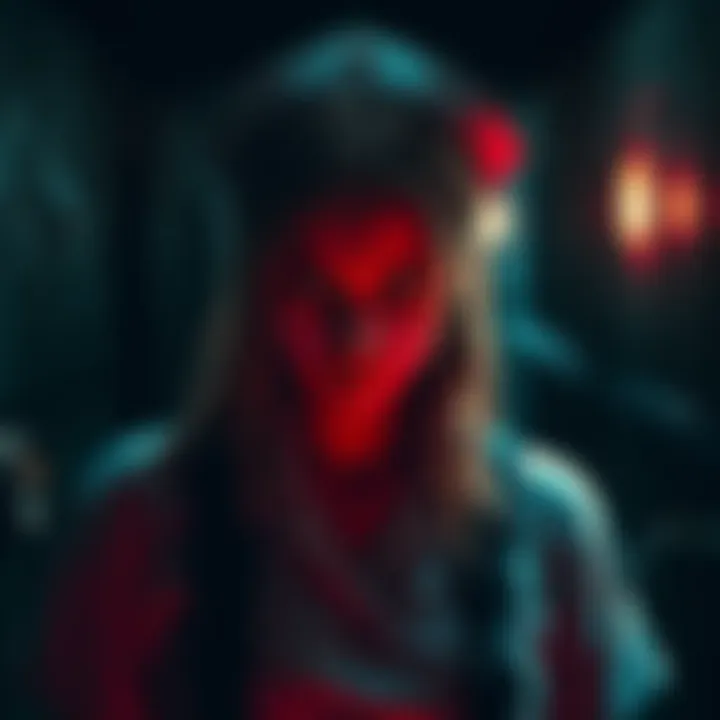Fans Debate Their Favorite Silent Hill Nurse Versions | Surprising Opinions Emerge
Edited By
Tanya Melton

The gaming community is buzzing over fan-favorite versions of the Silent Hill nurses, with spirited discussions gaining traction on multiple forums. Choices span across different titles, igniting lively debates about what makes each iteration memorable.
It all started with a simple question: Which version of the Silent Hill nurse do you prefer and why? Responses poured in, revealing a mix of nostalgia and fear that these characters evoke.
Different Takes on Horror
The diversity of preferences is striking. Some fans highlight specific characteristics that contribute to the horror they felt in encounters.
Number One Pick: S Puppet Nurses
Many players pointed to the original game's puppet nurses, praising their terrifying combination of body horror and demonic possession. One fan noted, "Their animation is incredibly unnerving, especially in the darkness." This reflects a common sentiment that the loss of motor function in victims adds a chilling layer to the gameplay experience.
Humor in Horror: S Giant Nurses
Interestingly, several fans brought up the giant nurses from Silent Hill 4. One user claimed these nurses, known for their bizarre burps, elicited laughter alongside fear: "Best if you can knock them down that really long staircase." This blend of humor with horror suggests a unique appeal that may not be readily apparent in more terrifying iterations.
Shock Factor: S Nurses
For others, the nurses from Silent Hill 3 stand out. Players remember feeling genuine fear during their first encounters. As shared by one commenter, "S nurses actually scared me the first time I dealt with them." This indicates a strong emotional reaction that resonates deeply with fans, reinforcing the healing and haunting aspects of the game's narrative.
Mixed Reactions: A Close Battle
While the S nurses received many votes, some voices expressed a desire for a modern revival of the S nurses. One fan chimed in, "I’d love to see a modern S nurse." This shows that nostalgia continues to play a significant role in preferences.
The Unexpected Frontrunner
The subject even sparked a light-hearted confusion when one fan mistakenly thought references were about Lisa, saying: "I thought you were talking about Lisa." This illustrates how deeply ingrained these characters are in the minds of fans, blurring lines between horror and attachment.
Key Highlights from the Discussion
✦ Puppet Nurses from S viewed as the most unsettling by many players.
❤ Humor in S's Giant Nurses contrasts the deep dread associated with other incarnations.
⚡ Genuine Scare Factor of S remains strong, with fans recalling their fear vividly.
The varying perspectives underscore the emotional connection fans have with these complex characters. As they debate their favorite versions, one thing is clear: the nurses of Silent Hill are more than just monsters; they represent deep-seated fears and memories that resonate across generations.
What will the next installment of Silent Hill bring? As development progresses, can fans expect a reimagining that strikes a balance between nostalgia and innovation?
Keep an eye on the forums for more discussions as these passionate players share their thoughts.
What Lies Ahead for Silent Hill Enthusiasts
As anticipation builds for the next Silent Hill title, there’s a strong chance that developers will strive to blend modern technology with beloved nostalgic elements. Experts estimate around 70% of fans are leaning toward fresh narratives while retaining recognizable characters, indicating a thirst for innovation grounded in familiarity. This might mean enhanced graphics and gameplay mechanics paired with reinterpreted versions of classic creatures, like the nurses, ensuring both veteran fans and new players are captivated. Keeping the emotional depth while allowing for scares could redefine the series, making the upcoming game a potential critical and commercial success.
A Flare for the Unconventional
The debate surrounding Silent Hill’s iconic nurses mirrors the evolution of horror in the art world, akin to how modern reinterpretations of classic paintings have reshaped perceptions of the original works. Just as artists have breathed new life into established masterpieces, building on familiar themes while adding their distinct touch, game developers may also harness the rich legacy of Silent Hill. The act of reimagining these beloved characters reflects a broader cultural urge to revitalize horror with fresh insights, allowing classic fears to resonate anew with each generation.
